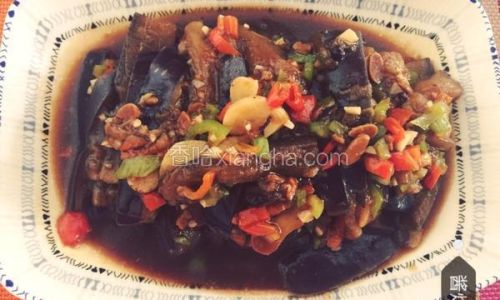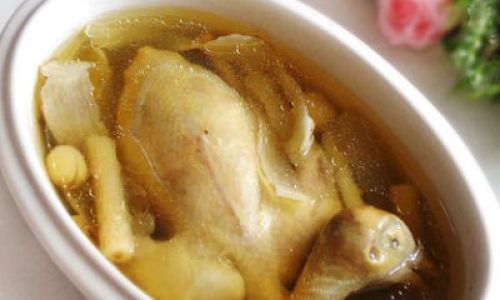Introduction
In the vast culinary landscape of global dishes, stewed eggplant with sauce stands out as a hearty and flavorful delight that transcends cultural boundaries. Whether you’re a seasoned chef or an enthusiastic home cook, mastering the art of making this dish can elevate your culinary repertoire to new heights. This article will guide you through the step-by-step process of crafting a delicious stewed eggplant with sauce, highlighting key techniques, ingredient selection, and flavor balancing to ensure your final dish is nothing short of exquisite.
Understanding the Ingredients

Before diving into the cooking process, it’s crucial to understand the role each ingredient plays in creating the perfect stewed eggplant with sauce. Here’s a breakdown of the essentials:
-
Eggplants: Choose firm, glossy eggplants with smooth, unblemished skin. The color can vary from deep purple to green, but the texture should be consistent throughout. Avoid eggplants with soft spots or wrinkles as they may be overripe.
-
Oil: A good quality vegetable or olive oil is ideal for sautéing the aromatics and cooking the eggplant. The oil not only adds flavor but also helps in caramelizing the vegetables, enhancing their natural sweetness.
-
Aromatics: Garlic, ginger, and onions form the backbone of the sauce. They provide depth and complexity to the dish, so fresh, high-quality produce is a must.
-
Tomatoes: Fresh tomatoes or canned tomato puree can be used. Fresh tomatoes offer a fresher, brighter flavor, while canned puree adds convenience and a concentrated tomato taste.
-
Sauce Base: Soy sauce, vinegar, and sugar (or honey for a vegan option) are used to create a balanced, savory-sweet sauce. Adjust quantities according to personal taste preferences.
-
Seasonings: Salt, black pepper, and optional spices like cumin, paprika, or chili flakes can be added to suit your palate.
-
Stock or Water: A small amount of vegetable stock or water helps to create a stew-like consistency.

-
Fresh Herbs: Coriander, parsley, or basil can be used as garnishes to add a fresh, aromatic finish.
Preparation Techniques
-
Prepping the Eggplant: Start by washing the eggplants thoroughly under running water. Cut them into bite-sized pieces, removing the stems and any tough skin. To prevent the eggplant from absorbing too much oil and becoming mushy, you can sprinkle a little salt over the pieces and let them sit for 15-20 minutes. This draws out excess moisture. Pat them dry with paper towels before cooking.
-
Sautéing Aromatics: In a heavy-bottomed pot or wok, heat oil over medium heat. Add finely chopped garlic, ginger, and onions. Sauté until fragrant and the onions are translucent, about 3-4 minutes. This step is crucial for building the foundation of the sauce’s flavor.
-
Cooking the Eggplant: Add the prepared eggplant pieces to the pot, stirring occasionally to ensure even cooking. Cook until they start to soften and turn golden brown, about 5-7 minutes. This caramelization adds a layer of sweetness and depth to the dish.
-
Creating the Sauce: Once the eggplant is partially cooked, add chopped tomatoes (or tomato puree), soy sauce, vinegar, and sugar (or honey). Stir well to combine, letting the tomatoes break down and form a sauce. If using fresh tomatoes, you may need to cook for a few extra minutes to achieve the desired consistency.
-
Seasoning and Simmering: Season with salt and black pepper to taste. Add any optional spices at this stage. Pour in enough vegetable stock or water to reach your desired stew consistency. Lower the heat, cover, and let the mixture simmer for about 15-20 minutes, stirring occasionally to prevent sticking. This allows the flavors to meld together and the eggplant to become tender.
-
Final Adjustments: Taste the stew and adjust the seasoning if necessary. If you prefer a thicker sauce, you can cook it uncovered for a few more minutes to reduce the liquid. Conversely, add more stock or water if it’s too thick.

Serving and Garnishing
Serve the stewed eggplant with sauce hot, over a bed of rice or noodles for a comforting meal. Garnish with freshly chopped herbs like coriander, parsley, or basil to add a burst of freshness and color. For an added touch of elegance, you can drizzle a little extra virgin olive oil over the top before serving.
Storage and Reheating
Leftover stewed eggplant with sauce can be stored in an airtight container in the refrigerator for up to 3 days. To reheat, simply place the dish in a microwave-safe container and heat until warm throughout, stirring occasionally. Alternatively, you can reheat it on the stovetop over low heat, adding a splash of water if the sauce becomes too thick.
Conclusion
Making stewed eggplant with sauce is not just about following a recipe; it’s about understanding the interplay of flavors and textures that make this dish so special. By paying attention to ingredient quality, mastering cooking techniques, and experimenting with seasoning, you can create a stewed eggplant with sauce that is uniquely yours. Whether enjoyed as a main course or a side dish, this hearty, flavorful meal is sure to become a staple in your kitchen. Happy cooking!





0 comments